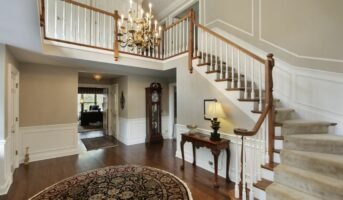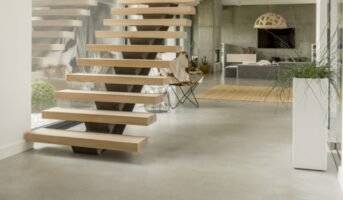Even though a staircase is made to serve a purpose, a well-designed staircase can uplift the décor of a home. There are various materials available for designing a staircase that can complement the overall theme of the space.

Also read: Staircase Vastu Shastra : Direction, location and number of steps for stairs explained
Materials of stairs
Concrete stairs
Concrete is one of the strongest materials used for making stairs. It can be shaped in a straight, curved, or spiral shape to suit any home décor. Reinforced concrete, besides being durable, is strong, pleasing in appearance and non-slippery. Concrete itself is unattractive, however, it can be enhanced with slabs of stone, marble tiles or terrazzo finish. A concrete staircase is usually designed along with wood – the stairs are covered with veneer and the railings are made in warm wood.
known about: Clever stairs for small spaces
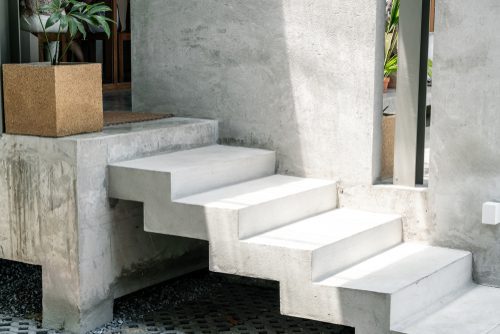
know about: stair tiles design
Wooden stairs
Wood is a commonly used material as it is classical, durable and evergreen. It is a pliable material, allowing for unique stair shapes and designs, such as traditional, rustic or modern. Wood blends with any interior style. You may opt for natural wood grain or paint it in a colour of your choice.
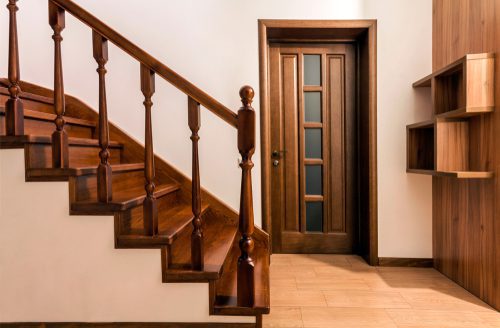
Stone stairs
Commonly used stones for stairs include marble, granite, quartz and onyx. Stone is a better option for stairs in the entryway, garden area and plush living rooms. It adds elegance to your home design and can be carved into different shapes. Stone staircases spell elegance and luxury and are good for classical, neo-classical, gothic, baroque and other styles.
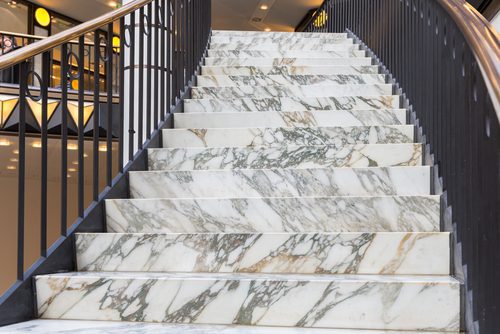
Read also: Granite for modern stairs: Design ideas for adding a luxe look
Metal stairs
Metal is durable and easy to install and maintain. It is a good option for houses with small spaces. Metal stairs can be fabricated from steel, stainless steel, cast iron and aluminium. Plus, it does not become slippery when wet. However, iron is prone to rust, hence, it is mostly preferred indoors. Metallic stairs are ideal for modern or industrial thematic spaces. A classical choice is stainless steel, which is extremely resistant to corrosion. The superior strength of the material gives steel staircases an extraordinary beauty.

Glass Stairways: Contemporary and bright
Glass is the most popular choice for homes with ultra-modern and luxurious designs. Glass staircases reflect a unique and affluent lifestyle and are becoming increasingly popular in the modern world. Glass used to be a fragile material, however, technology has made it stronger. There are no limits to glass stair layouts, from straight, quarter turn and half turn to curved and S-shaped. If you want to give an exclusive touch of class incorporate led lights into the steps or the railing. Tempered or laminated glass is commonly used for staircase designs. One of the biggest advantages of glass stairs is that they are unaffected by moisture and therefore do not dampen or rot like wooden stairs. Acrylic, too, is a strong material, however, it’s prone to scratching. Hence, it requires constant maintenance.

Source: Benjamin Friedl (Pinterest)
Staircase designs
The staircase design is an important architectural feature that can add to the charm of any interior space. Staircases can be designed in combinations of forms to best fit the space, function and aesthetic of any home.
Floating stairs: Sleek and modern
Also known as cantilevered stairs or open-riser stairs, the floating stairs create an illusion of floating in mid-air. They stand out from the rest of the designs owing to their construction. As opposed to traditional supports, floating stairs use a hidden frame that give the look of steps without support. This minimalist design anchors a beam in the wall without visible support structures, such as a handrail, on the other side. Because of this design, there is light and openness making the area where they are built look very spacious. They look good in all kinds of building designs be in residential or commercial. Floating staircases can be made of wood, glass, concrete or stainless steel.
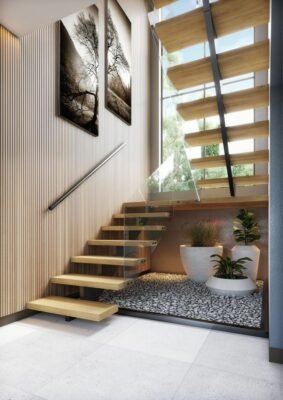
Source: ARCVISA STUDIO (Pinterest)
Curved staircases: Elegant and timeless
A curved staircase makes a stunning impact with its gentle arc. Curved stair requires a big space and radius. Unlike a spiral staircase, these stairs do not form a complete circle. Instead, the steps and railing follow a subtle curve, making them more straightforward to navigate. Many materials can be used for curved staircases, such as wood combined with stainless steel. Concrete, too, is a popular choice for curved stair design. Curved staircases do not require a fixed central column and frequently feature two rolled stringers with steps attached between them. Curved stairs usually have handrails on both sides, designed with stainless steel or timber. Glass balustrades can be used to beautify a curved staircase.
Moreover, the curved staircases provide an easy and comfortable ascent. The curve decreases the steepness of each step and helps in comfortable ascend and descend. steepness of each tread, making it easier and more comfortable to climb. These steps are particularly beneficial for individuals with mobility concerns.
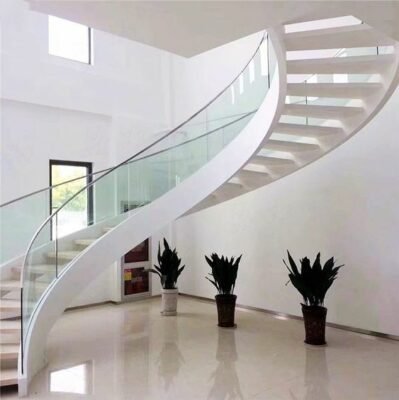
Source: NST Stairs&Railing (Pinterest)
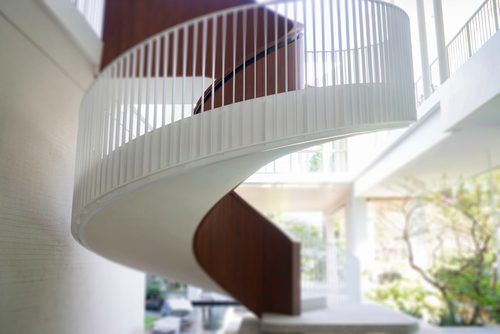
Straight stairs
One of the most popular staircase designs is the straight staircase, which is functional and simple. These stairs move from one floor to the next, without turning. However, the main drawback of this style is that it takes up a significant amount of linear space.
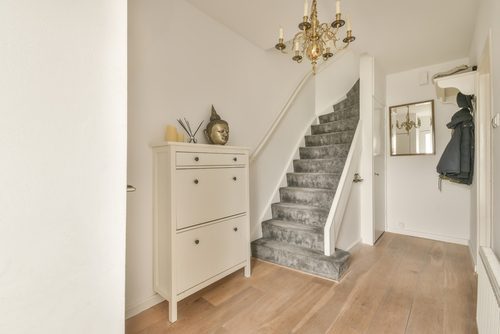
Spiral Staircases: Unique and stylish
Spiral staircases are one of the most iconic and aesthetically pleasing staircase designs throughout the centuries and were seen during the Gothic era.
It is a round stair system in which the individual steps connect to a centre column, hence, forming a complete circle. The diameter of the circle creates the diameter of the staircase. Spiral staircases form a tightly wound helical shape around a centre pole, resembling a corkscrew. Homeowners opt for this space-saving stair when floor space is coveted, such as an outdoor deck. Though whimsical, these circular staircases can be tricky for some people to climb because each step narrows towards the centre and usually have open risers.

Source: dezeen.com (Pinterest)
The spiral stairs can be made of any material that goes with the entire decor of your house. For example, the spiral stairs made in the above picture using marble and wood looks very classy.
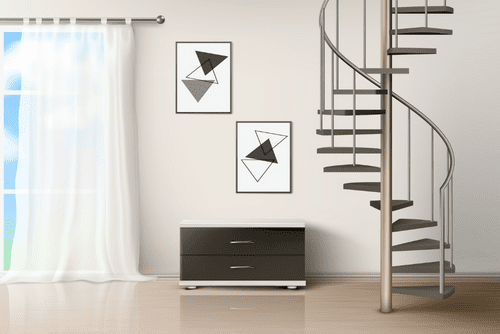
L-shaped stairs
L-shaped or quarter-turn stairs are straight staircases with one 90-degree bend, usually at a midpoint landing. These stairs are easier to ascend than curved stairs due to the landing, which breaks the climb.
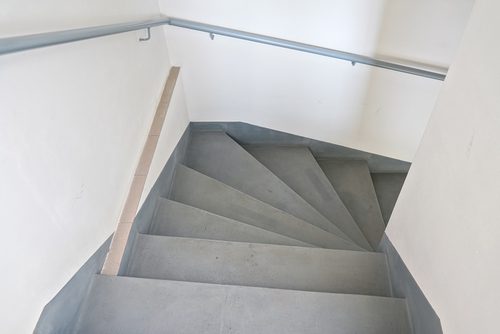
U–shaped stairs
U-shaped stairs can be defined as two short stairs that run in opposite directions and are connected by a common landing. As the name suggests, U-shaped stairs are two parallel flights of stairs separated by a small landing area that creates a 180-degree bend. Hand railings are usually easy to install for these stairs.
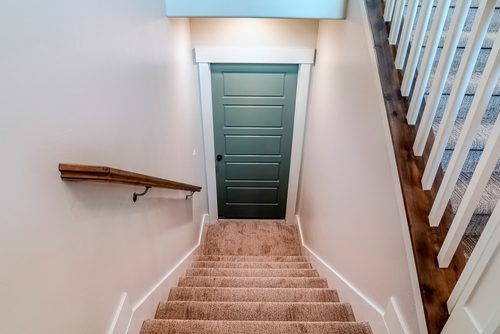
Winder stairs
Winder stairs are a variation of the L-shaped stairs, However, instead of a flat landing, they have pie-shaped or triangular steps at the corner. A set of winders – treads that are wider on one side than the other – replaces the landing to save space. Winder stairs look visually appealing with their seamless transition as they meander around corners. However, it is not easy to fit handrails on these kinds of staircases.
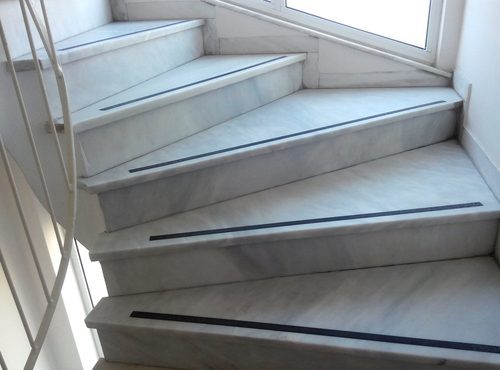
Split staircase (Bifurcated)
Split staircases or bifurcated stairs have a wide, linear staircase, which splits into two with a landing space as the divider. Split stairs have a wide set of stairs, starting at the bottom and splitting at the landing into two narrower sets of stairs heading in opposite directions. They make an impressive design statement and are ideal for privacy between the floors and rooms.
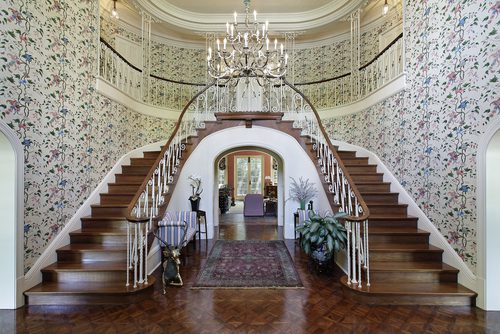

Ladder stairs
A ladder is the most space- and cost-efficient option. It is ideal for areas that are rarely visited, such as attics, ceilings and lofts. Ladders could have wheels and can be easily folded up when not in use. However, they are steep and narrow, which can be tricky to navigate. Hence, building codes do not allow ladder stairs to be the primary staircase in a home design.
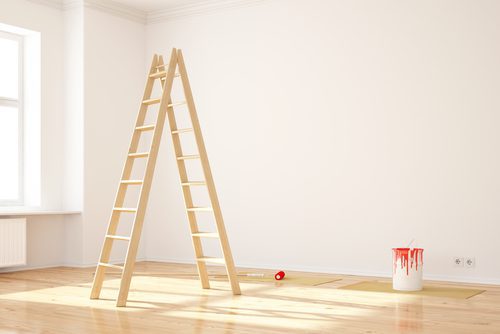
New trends in staircase designs
Metal finishes are in trend in staircase designs. Railings and poles look attractive due to the available metal options, such as aluminium, stainless steel, galvanized steel and wrought iron. Staircase railings are versatile and the latest trend in home décor. Depending on the theme of the décor, opt for a delicate yet durable metal criss-cross string or a wave pattern.
Colourful stairs
Colours can brighten the stairs. You can choose a dual colour scheme or multiple colours. Bright yellow, orange, blue and green are trendy staircase design colours. Even tiles with fancy designs or wallpapers can be used on the stairs. Remember that wallpaper is only applied to the step risers and not the step treads. Stair risers with mosaic tiles are a growing trend.
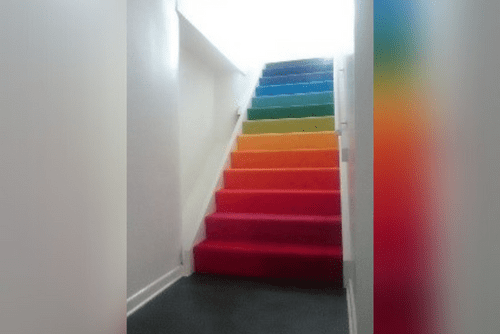
Source: Pinterest
Multifunctional staircase
Maximum utilisation of space helps in keeping things organised at home. Adding extra storage space for books and other items with built-in compartments under the stairs is a very popular trend.
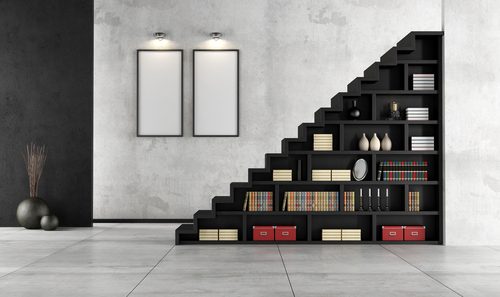
Safety tips for stairs
- The staircase must balance style and functionality. Safety is one of the crucial aspects to consider when choosing stair designs. Opt for a closed staircase if you have small children. Handrails provide support when ascending or descending the stairs, especially for senior citizens.
- Tread is the horizontal part of the staircase meant to be stepped A tread must be comfortable to land on without any slippery surface to avoid accidents.
- The height of each riser and the width of each tread are the most important elements of effective staircase design. The risers should be exactly or almost the same height.
- Ensure that the staircase is well-illuminated so that users can see every step.

Source: Pinterest
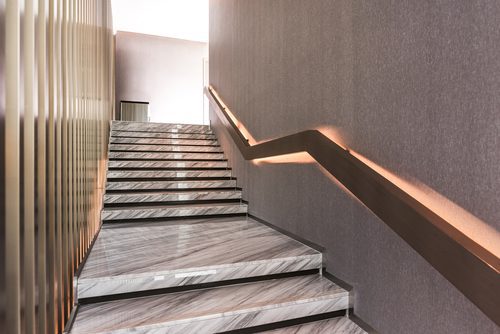
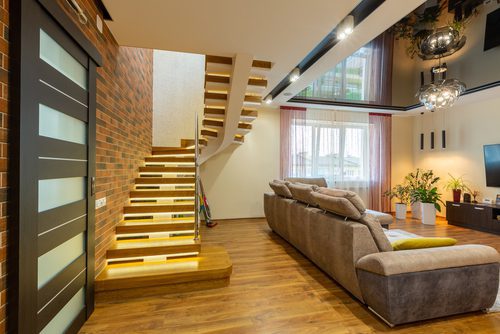
Vaastu for stairs
- According to Vaastu the recommended direction for an internal staircase is Southwest, South and West. This applies to east-facing, north-facing and west-facing houses. In a south-facing home, an internal staircase can be in the South, Southeast, West or Northwest part of the house. Avoid stairs in the North. Stairs should be built in a clockwise pattern. The main door should never open directly to the staircase.
- Stairs in Brahmasthan (centre of the house) are not recommended. Avoid spiral-shaped stairs, states Vaastu, as they can cause ill health. A square or rectangle-shaped staircase gives good vibes. The turns at right angles ensure a good flow of positive energy.
- Do not have a kitchen, temple room or bathroom, under the staircase. This space should only be used for a storage room.
- Vaastu states that staircases must always have an odd number of steps. As a person starts climbing a staircase with their right leg, it is auspicious if the climb ends on the right foot too. Vaastu recommends stairs of light colours.
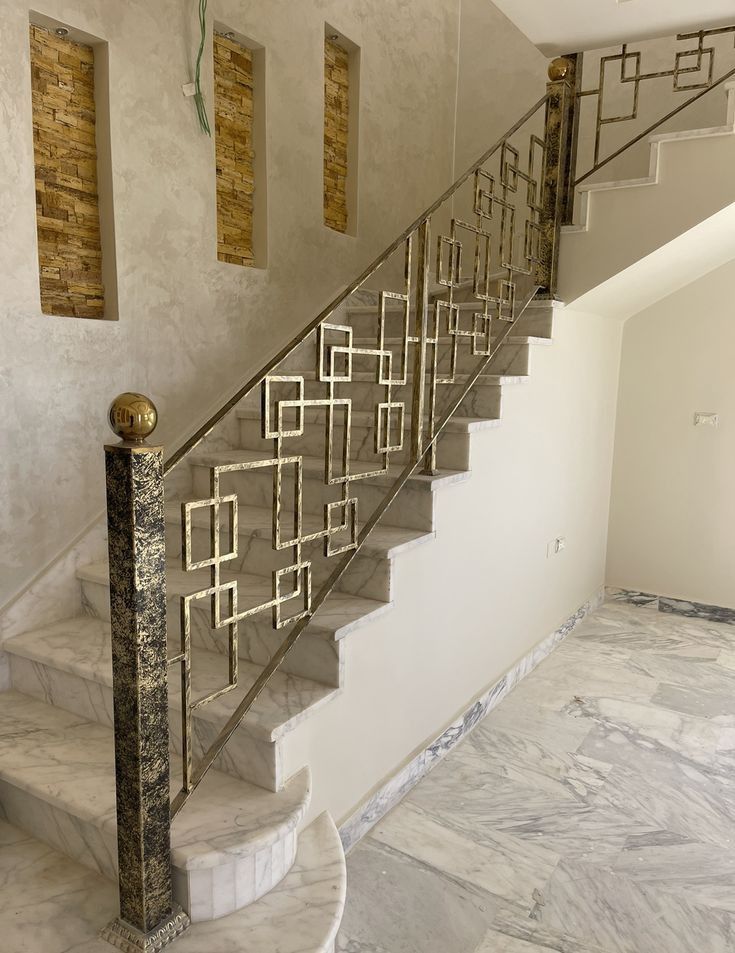
Source: Pinterest
See also all about: stair designs
Staircase decorating ideas
- Adorn the walls adjacent to the staircase with textured paint, artwork or mirror. Opt for an attractive baluster. Handles of the stairway railings can be made with stylishly carved wooden work or gold paint. High-gloss black paint or even golden colour can transform the stair treads, new posts and railing of a traditional staircase. A warm, natural wood railing and baluster shaped like tree branches or floral motifs can give the stairway a lovely appearance.
- If the stairs are spacious, keep potted plants. However, avoid it if there are small kids in the home. Stair carpets are found in various colours textures and fabrics. Dramatic-shaped, contemporary light fittings above the staircase can create a stunning impact.
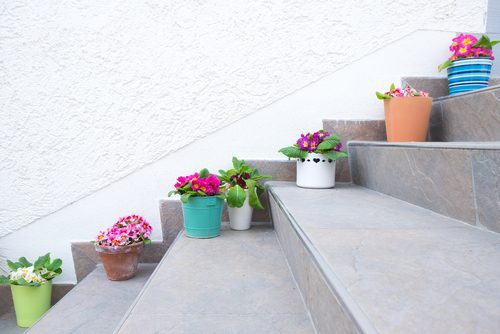
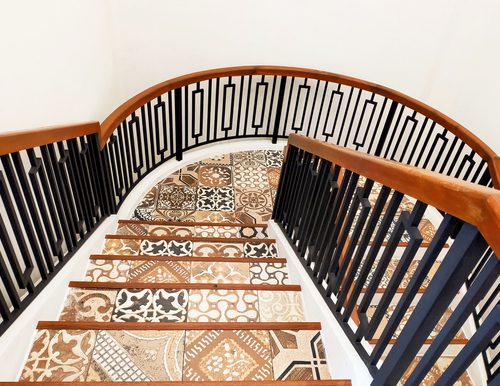
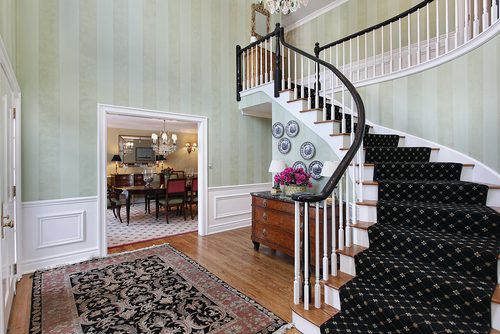
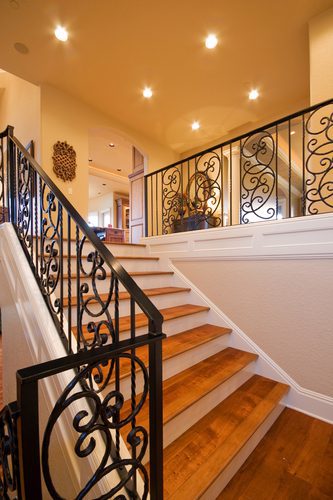
FAQs
What is the difference between stairs and staircases?
Stairs mean a full flight (or a single group) of stairs between two floors. A staircase or stairway is one or more flights of stairs leading from one floor to another and comprises landings, newel posts, handrails and balustrades.
What should I consider when designing a staircase?
Consider the space, budget, materials and occupants’ comfort while using the stairs. A good staircase design provides an efficient and pleasant way to move between floors and should include all the features to ensure safety. Keep the same length, width and height of the steps to avoid accidents. Keep the maximum height of one flight around 2.4 meters. Stairways with more than 15 steps should incorporate a landing. The style of the stair should enhance the overall décor.
What are round stairs called?
Round stairs are called circular stairs or spiral stairs, depending on the stair design. Circular stairs follow a circle with a single centre of curvature and a large radius. True spiral stairs have one central post to which all the steps are attached.
What is the standard size of the staircase?
As per the Indian National Building Code, the minimum space for the staircase width in a residential building should be 3 feet and 6 inches, while the minimum width of the tread, without nosing, should be 10 inches, or 10 ¼ inches with nosing.
Purnima Goswami Sharma is a freelance writer based in Mumbai, who has been contributing to various newspapers, magazines and portals for the last two decades. Besides being a research writer for various TV shows, she has been a visiting faculty at SNDT for Communication Skills. She hold a master’s degree in English Literature from Mumbai University and a diploma in Communications and Journalism. She writes on diverse subjects like real estate, interiors, education, lifestyle, health, entertainment and environment.
Email: [email protected]





